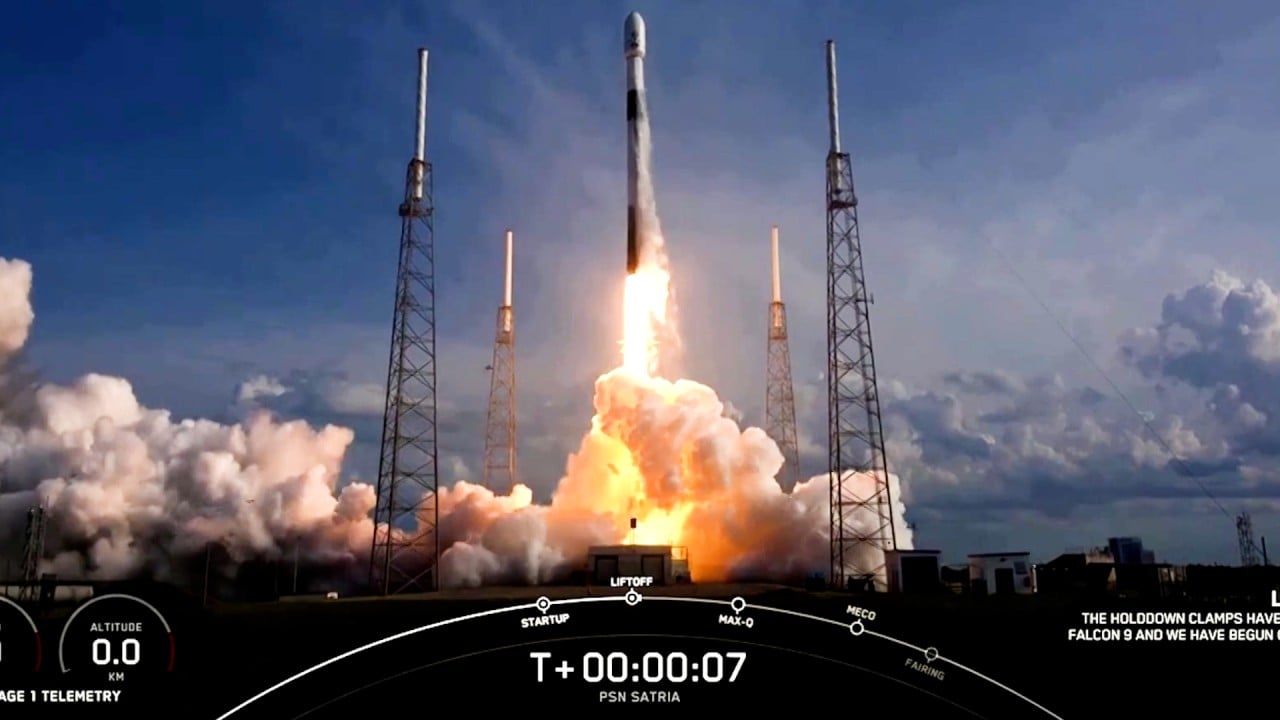Advertisement
China launches high-orbit satellite internet that could challenge SpaceX’s Starlink
- The Chinese network is expected to serve industries ranging from aviation and navigation to emergency services and energy
- Compared to Starlink, it requires far fewer satellites because each one covers wider area than those in Elon Musk’s low-orbit constellation
Reading Time:2 minutes
Why you can trust SCMP
99+

China announced it has completed the initial set-up of its first high-orbit satellite communication network, which is expected to provide a swift satellite internet service within its borders and in several belt and road nations.
The Chinese project could be an alternative to SpaceX’s Starlink, according to a Beijing-based communications expert.
China Aerospace Science and Technology Corporation, the parent company of the satellite operator, said the network would provide internet service for industries ranging from aviation and navigation to emergency services and energy, state news agency Xinhua reported on Monday.
The network includes high-throughput satellites ChinaSat 16, 19 and 26. According to the network operator, the satellites cover China as well as parts of Russia, Southeast Asia, Mongolia, India, and the Indian and Pacific Oceans – encompassing much of the area included in the Belt and Road Initiative, Beijing’s strategy to boost infrastructure links and connectivity across Asia, Africa and Europe.
The total capacity of China’s high-throughput satellites will reportedly exceed 500 Gbps by 2025.
China became the first country to offer smartphones with satellite calling features this summer when tech giant Huawei launched a 5G phone connected to similar high-orbit satellites 36,000km (22,369 miles) away.
Because of their long distance from the ground, high-orbit satellites stay in a comparatively fixed position relative to the device connecting to them, so each one covers a much broader area than low-orbit satellites, said Sun Yaohua, associate professor in information and communication engineering at the Beijing University of Posts and Telecommunications.
Advertisement
